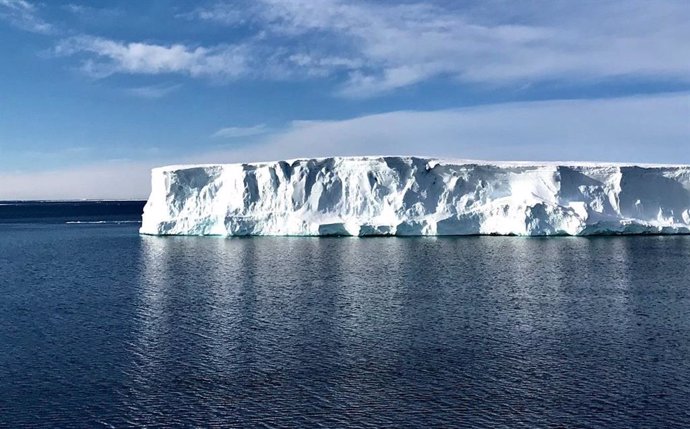Ice front on the Antarctic coast – CALTECH/ANDY THOMSON
June 19 () –
A new current that follows rising meltwater has been discovered through a region known as the Bellingshausen Sea, on the side of Antarctica closest to South America.
Due to warming caused by climate change, the Antarctic ice shelves they are melting at an accelerated rate. Most of the melting comes from beneath the ice shelves, as a result of warm water flowing beneath them. However, the process does not stop there: as meltwater enters the ocean, ocean currents transport it along the coast of Antarctica, modifying melt rates on the ice shelves below. It is necessary to map these defrosting pathways to better understand and predict melting ice and subsequent sea level rise.
“We used to think of ice shelves as isolated systems, but now we understand that multiple ice shelves are connected by currents along the Antarctic coast,” he says. it’s a statement Andy Thompson, professor of environmental sciences and engineering at Caltech. “What happens on one ice shelf changes processes on another. To accurately predict the changes, we have to understand the ripple effect they have on each other.”
For more than a decade, researchers in Thompson’s lab have studied the Antarctic seas using a combination of techniques. A new study led by lead researcher Mar Flexas examines the data collected by an autonomous underwater vehicle, as well as by seals equipped with sensors on their heads. Using this data, the team discovered a new current that follows meltwater through a region known as the Bellingshausen Sea, on the side of Antarctica closest to South America.
“The Bellingshausen Sea is not a well-studied region, but it is the first place where warm water from the Atlantic and Pacific oceans reaches the ice shelves,” says Thompson. “As the ice shelves melt, the water becomes colder and sweeter, which decreases its ability to melt“.
A decades-long collaboration of researchers from several institutions equips seals with small sensors that measure ocean properties as the animals travel and dive through the seas in search of food. The program is called Marine Mammals Exploring the Oceans from Pole to Pole (MEOP) and the data collected is publicly available to researchers.
Combining this data with data from the Thompson Laboratory’s underwater gliders, Flexas and his team collected information on properties such as ocean temperature, salinity, oxygen content, and particle concentration in the water in the Bellingshausen and Amundsen seas.
The team identified two distinct melt pathways originating from different ice shelves. One follows the coast and can increase melting on downstream ice shelves by trapping warm water at depth, while the other route returns to the open ocean. Interestingly, the seal data revealed a previously unknown depression or canyon in the seafloor, which the team appropriately named the seal depression. Underwater topographic features such as the seal trough They influence the flow of streams in a similar way to how canyons on land guide the flow of rivers.
The research is an important step in understanding how melting on individual ice shelves influences the broader Antarctic circulation and melting of ice shelves across the continent. As the oceans continue to warm due to climate change, a better understanding of processes near the Antarctic coast is needed to predict future rates of global sea level rise.
The research has been published in JGR Oceans magazine.













![[Img #74678]](https://thelatestnews.world/wp-content/uploads/2024/12/See-schizophrenia-and-bipolar-disorder-in-face-shape-300x200.jpg)
Add Comment